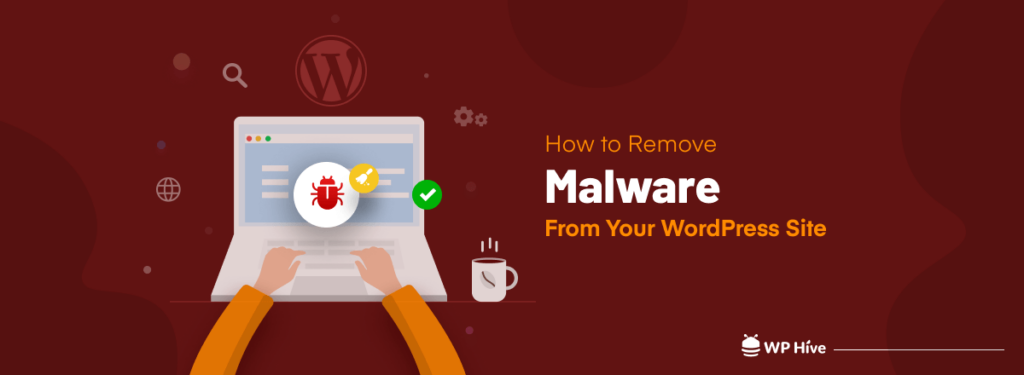“https://tecnoaldia.net/solucion-eliminar-malwares-de-tu-wordpress/” is an informative resource that offers solutions for removing malware from WordPress websites.
WordPress, the world’s most popular content management system (CMS), is a target for malicious actors due to its widespread use.
Malware, short for malicious software, can infiltrate your WordPress site, compromising its security and functionality. This can lead to a range of issues, including data theft, defaced websites, and SEO penalties.
This comprehensive guide equips you with the knowledge and steps to remove malware from your WordPress site and implement preventative measures to safeguard it from future attacks.
Understanding Malware in WordPress https://tecnoaldia.net/solucion-eliminar-malwares-de-tu-wordpress/
Malware encompasses various malicious programs designed to disrupt, damage, or steal information from your website. Common types of WordPress malware include:
- Backdoors: These scripts create a hidden access point for attackers to control your website.
- Pharming Hacks: They redirect visitors to fake login pages, tricking them into revealing login credentials.
- SEO Spam: Malware injects irrelevant keywords into your site’s content, negatively impacting your search engine ranking.
- Defacement: Attackers alter the visual appearance of your website, displaying offensive or malicious content.
- Malicious Redirects: Visitors are redirected to unwanted websites with inappropriate content or phishing scams.
These malicious programs can exploit vulnerabilities in outdated plugins, themes, or the WordPress core itself. Weak passwords and insecure hosting environments also contribute to malware infections.
Types of Malware Affecting WordPress:
Here’s a closer look at some common malware threats faced by WordPress websites https://tecnoaldia.net/solucion-eliminar-malwares-de-tu-wordpress/:

- File Infector Malware: This malware modifies existing files on your website by injecting malicious code. It can target core WordPress files, themes, plugins, and even media uploads.
- Database Injection Malware: This type injects malicious code into your website’s database. Attackers can then steal sensitive information, manipulate content, or redirect visitors.
- Spam Link Injection Malware: This malware injects spammy links into your website’s content. It can target posts, pages, comments, and even sidebars.
- SEO Spam Malware: This malware injects irrelevant keywords into your website’s content in an attempt to manipulate search engine rankings.
Scanning for Malicious Code https://tecnoaldia.net/solucion-eliminar-malwares-de-tu-wordpress/
The first step in removing malware is to scan your WordPress site for malicious code. Here are some methods for detecting malware:
1. Security Plugins: Free and premium security plugins like Wordfence and Sucuri Security offer scanning functionalities. They can detect malicious code, suspicious files, and vulnerabilities within your WordPress installation.
2. Manual Code Review: Advanced users can manually review their website’s code for signs of malware. This involves looking for suspicious code snippets, encoded data, and unusual file modifications. However, this approach requires a strong understanding of PHP and WordPress code structure.
3. Online Scanners: Several online scanners can scan your website for malware. Be cautious when using free online scanners, as some might be unreliable or even inject malware themselves. Opt for reputable services with a proven track record.
Identifying Malware https://tecnoaldia.net/solucion-eliminar-malwares-de-tu-wordpress/
Once you’ve scanned your website, you need to identify the specific malware infection. Security plugins typically provide detailed reports highlighting suspicious files and code snippets. If you’re manually reviewing the code, look for:
- Obfuscated Code: Code that appears intentionally scrambled or difficult to read.
- Suspicious Base64 Encoded Data: Data encoded using Base64 might hide malicious scripts.
- Injected Links: Links pointing to unknown or suspicious websites.
- Unfamiliar Functions: Code containing functions or libraries not used by your themes or plugins.
Removing Malware https://tecnoaldia.net/solucion-eliminar-malwares-de-tu-wordpress/
After identifying the malware, it’s time for removal. Here are some approaches:
1. Using Security Plugins: Many security plugins offer malware removal functionality. These tools can automatically quarantine or delete infected files.
2. Manual File Removal: For more control, you can manually delete infected files using an FTP client or your hosting provider’s file manager. Make sure you have a backup of your website before proceeding.
3. Database Cleaning: Database injection malware requires cleaning your WordPress database. This can be done using phpMyAdmin or similar tools. However, caution is advised, as modifying the database can break your website if done incorrectly. Consider seeking professional help if you’re unsure of the process.
4. Reinstalling WordPress Core: In severe cases, reinstalling the WordPress core files might be necessary. This ensures a clean slate and eliminates any potential malware hiding within core files. Remember to back up your themes, plugins, and content before reinstalling.
Characteristics of Anti-Malware Security and Brute-Force Firewall
While removing existing malware is crucial, preventing future infections is equally important. Consider installing an anti-malware security and brute-force firewall plugin. These plugins offer various functionalities, including:
- Real-time Malware Scanning: Continuously scans your website for malicious code and suspicious activity.
- Scheduled Scans: Performs regular scans to detect potential threats that might not be caught in real-time monitoring.
- File Integrity Monitoring: Tracks changes made to your website’s files and alerts you of any suspicious modifications.
- Brute-Force Protection: Safeguards your website against brute-force attacks, where attackers attempt to guess your login credentials.
- Firewall Functionality: Filters incoming traffic and blocks suspicious requests that could be malicious.
Popular anti-malware security and brute-force firewall plugins include Wordfence Security, Sucuri Security, and iThemes Security.
Recovery and Restoration https://tecnoaldia.net/solucion-eliminar-malwares-de-tu-wordpress/
If manual removal attempts fail or the infection is severe, consider website restoration. Here are your options:
- Backup Restoration: If you have a recent and clean backup of your website, you can restore it to a point before the malware infection occurred. This is the quickest and safest option.
- Professional Website Recovery Service: For complex attacks, professional website recovery services can help analyze the damage and restore your website to its original state.
Usage and Recommendations:
Here are some pointers for using security plugins and maintaining a safe website https://tecnoaldia.net/solucion-eliminar-malwares-de-tu-wordpress/:
- Keep Security Plugins Updated: Regularly update your security plugins to ensure they have the latest detection signatures and security features.
- Strong Passwords: Utilize strong passwords for your WordPress admin account and FTP access. Implement two-factor authentication for an additional layer of security.
- Theme and Plugin Updates: Keep themes and plugins updated to their latest versions. Outdated themes and plugins often contain vulnerabilities that attackers can exploit.
- Regular Backups: Regularly back up your website files and database. This allows you to easily restore your website in case of malware infection or other unforeseen occurrences.
Preventive Measures https://tecnoaldia.net/solucion-eliminar-malwares-de-tu-wordpress/
The steps outlined below will significantly enhance your website’s security posture and reduce the risk of future malware infections:

- Vulnerability Scans: Regularly conduct vulnerability scans using online tools or security plugins. These scans identify potential weaknesses in your website’s code and configuration that attackers might target.
- Limit User Permissions: Assign the least privileged user roles for website users. Avoid granting unnecessary administrative access to everyone.
- Secure Hosting Environment: Choose a reputable web hosting provider that prioritizes security and offers features like malware scanning and intrusion detection.
- Website Monitoring Services: Consider website monitoring services that continuously monitor your website for any suspicious activity or downtime.
Conclusion:
Malware infections https://tecnoaldia.net/solucion-eliminar-malwares-de-tu-wordpress/ on WordPress websites can be disruptive and cause significant damage.
By following the steps outlined in this guide, you can detect and remove malware, restore your website, and implement preventive measures to secure your site in the long run.
Remember, maintaining consistent security practices and staying proactive are vital in protecting your WordPress website from malicious threats.
FAQ’s:
1. How long does it typically take to remove malware from a WordPress website?
Removal time varies depending on the severity of infection, but can range from a few hours to several days.
2. Will my website be down while I remove malware?
Not necessarily. Most removal methods won’t disrupt your website’s functionality. However, complex cases might require temporary downtime for restoration.
3. Is it safe to use free online scanners for malware detection?
Use caution with free scanners. Some might be unreliable or even inject malware themselves. Opt for reputable services with a proven track record.
4. Can I remove malware from my website without any technical knowledge?
Security plugins often offer automated removal features that simplify the process. However, for advanced cases or manual removal, some technical knowledge might be beneficial.
5. What happens if I don’t remove malware from my website?
Leaving malware unaddressed can lead to data breaches, SEO penalties, website defacing, and potential legal repercussions.
6. Is a security plugin enough to prevent future malware infections?
While security plugins are crucial, a layered approach including regular backups, updates, and strong passwords provides comprehensive protection.
7. What are some signs that my WordPress website might be infected with malware?
Signs include unusual website behavior, slow loading times, injected spam content, unexpected redirects, and security warnings from your browser.
